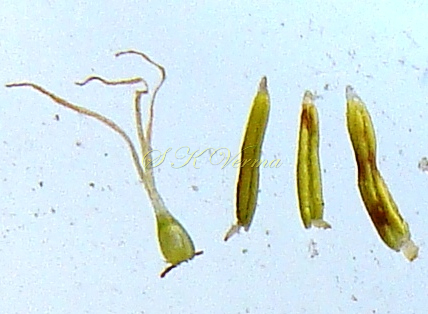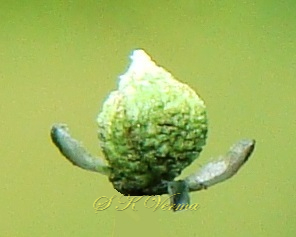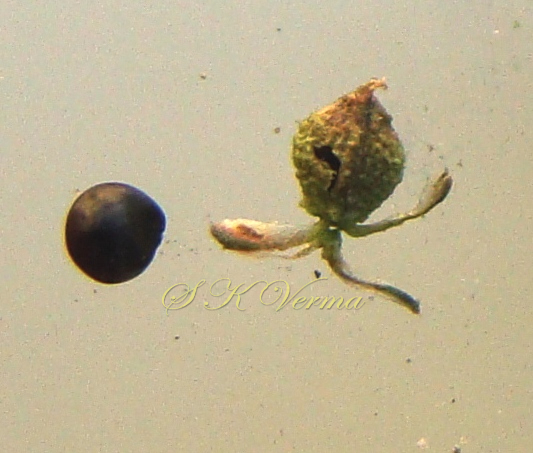AMARANTHUS
Amaranthus
L., Sp. Pl. ed.1: 989. 1753; Gen. Pl. ed. 5: 427. 1754; Boiss., Fl. Or. 4: 998; 1879; Hook. f., Fl. Brit. India 4: 718. 1885; Schinz in E. & P. Pflanzenfam. ed. 2, 16c: 35. 1934; Fl. China @ eFloras.org 5: 417. 2003; Mosyakin & Robertson, Fl. North Amer. @ eFloras.org 4: 410; Fl. Pak. @ eFloras.org p. 7.
Annual, rarely perennial herb, mostly glabrous. Stem erect or decumbent. Leaves alternate, long-petiolate, simple and entire. Inflorescence basically cymose, bracteate, consisting entirely of dense to lax axillary cymose clusters or the upper clusters leafless and +/- approximate to form a lax or dense spike or panicle. Flowers unisexual, dioecious or bisexual, monoecious, bracteate, bibracteolate. Tepals 3-5, rarely 2, free or connate at base, membranous, those of the female flowers slightly accrescent in fruit. Stamens 3-5, rarely 2 (usually similar in number to perianth), free; pseudostaminodes absent. Ovary 1-locular with solitary erect ovule; style short or absent; stigmas 2-3, persistent, subulate or linear. Utricles globose or ovoid, laterally compressed, 1-seeded, indehiscent, falling off together with perianth or irregularly rupturing or commonly dehiscing by a circumscissile lid. Seeds usually black and shining.
95 species
Amaranthus viridis
Amaranthus viridis
L., Sp. Pl. 2: 1405. 1753; Hook. f., Fl. Brit. India 4: 720. 1885; Townsend in Nasir & Ali, Fl. W. Pak. 71: 14. 1974; Sharma & Kachroo, Fl. Jammu (Illustr.) 2: t. 239. 1983; Kaur & Sharma, Fl. Sirmaur 539. 2004; Singh & Sharma, Fl. Chamba Dist. 591. 2006; Fl. China @ eFloras.org 5: 420; Fl. North Amer. @ eFloras.org 4: 429; Fl. Pak. @ eFloras.org p. 14.
Annual herb, decumbent at base, up to 100 cm tall. Stem slender, sparingly to more branched, angular, green, somewhat tinged purple, glabrous or with multicellular hairs. Leaves long petiolate, petiole 3-6(-10) cm, green or somewhat tinged with purple; leaf blade ovate, ovate- oblong, or ovate-elliptic or rhombic-oblong, 2-10 cm x 1.5-6.5 cm, base broadly cuneate or subtruncate; margin entire or slightly undulate; apex rounded or narrow to clearly emarginate, with a pointed mucro; glabrous or shortly to fairly long-pilose on lower surface of the primary and most of the venation. Flowers green, in slender, axillary or terminal, often paniculate spikes, ca. 2.5-17 cm long and 2.5 mm wide. Flowers unisexual, male and female intermixed but female flowers are more numerous. Bracts and bracteoles lanceolate, 0.5-0.6(-1) mm long, shorter than tepals. Male Flowers: Inconspicuous, mostly confined to the tip of inflorescence. Tepals 3, free, oblong-oval, acute, concave, 1.25-1.5 mm, shortly mucronate. Stamens 3, free; filaments 0.05 mm long; anthers 0.5 mm long, oblong. Pseudostaminodes absent. Pistillode absent. Female Flowers: Tepals 3, free, narrowly oblong to narrowly spathulate, finally 1.25-1.75 mm, minutely mucronate or not, the borders white-membranous, midrib green and often thickened above. Stamens absent. Ovary unilocular with solitary erect ovule; style very short; stigma 2-3, 0.5-1.0 mm long, curved. Utricle subglobose, 1.25-2.0 mm, not or slightly exceeding the perianth, one-seeded, indehiscent or rupturing irregularly, very strongly rugose throughout. Seeds 1-1.25 mm in diameter, subglobose, slightly compressed, black or brownish black.
Common Names: Green Amaranth, Pigweed, Prince of Wales feather, Slender Amaranth, Tropical Green Amaranth; Jungli Chulayi (Hindi)
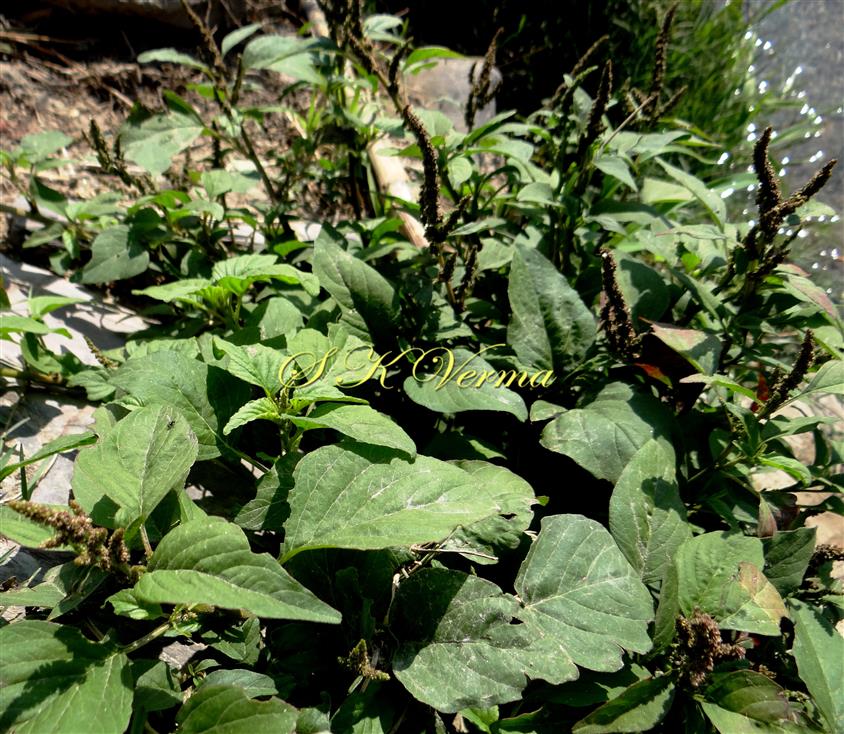
-DSC02065.jpg)
-DSC04034.jpg)
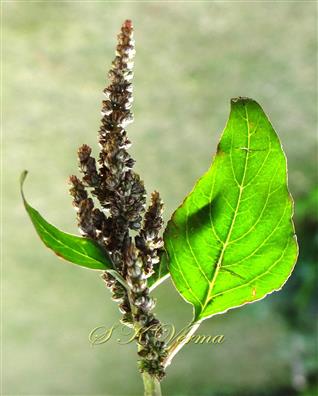
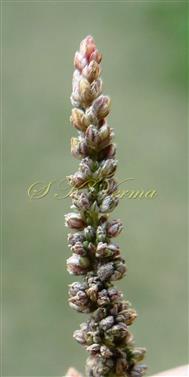





-DSC02065.jpg)
-DSC04034.jpg)


